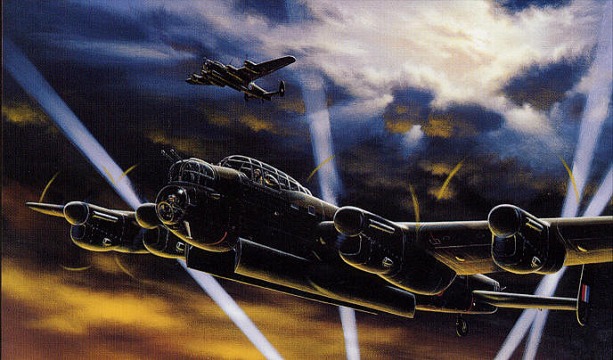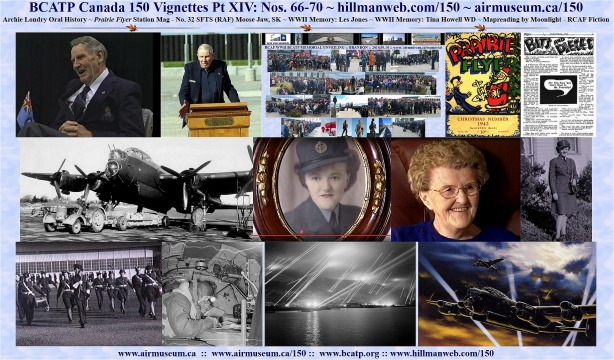067 of
150: The Prairie Flyer Station Magazine -- No. 32 SFTS (RAF) Moose
Jaw Saskatchewan
In this vignette,
we present a couple of pages from the Prairie Flyer – Christmas 1942, station
magazine of No. 32 Service Flying Training School in Moose Jaw Saskatchewan.
No. 32 SFTS was a Royal Air Force school which is reflected somewhat in
the articles which contain a few English eccentricities. As the graphics
don’t show well, they have been transcribed.
.
How to Live in the Air Force – In One Easy Lesson
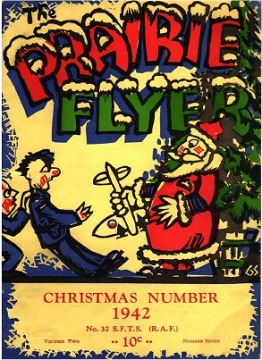 On
learning recently that a friend of mine was about to join the Air Force,
I decided to send him (together with the usual expression of sympathy)
some general advice on conduct in the hope it might help to smooth the
rocky path ahead of him. It was the most one could in the sad circumstances.
On
learning recently that a friend of mine was about to join the Air Force,
I decided to send him (together with the usual expression of sympathy)
some general advice on conduct in the hope it might help to smooth the
rocky path ahead of him. It was the most one could in the sad circumstances.
If those of you who have friends or brothers coming into
the Service would care to pass on the same advice to them, here it is in
tabloid form:
(1) Never wear a trilby hat with your uniform. It is considered
bad taste.
(2) Never wear a red tie on parade. It may be thought
to have a political significance.
(3) Never walk out of camp without calling at the guardroom
first. The guardroom may have an important message for you.
(4) Never forget, if you want your breakfast in bed, to
order it the evening before. This saves the cookhouse a lot of trouble.
(5) Never slap an officer on the back with "What-ho, twerp!"
"Hallo" is considered much better etiquette.
(6) Never sing on early morning parade. Singing may wake
up the others.
(7) Never offer the Accounts Officer a tip when you are
paid. An Accounts Officer can get all the money he needs without a tip.
(8) Never take a week off without first telling Headquarters
that you are going. Unreported absences only cause bother in handling the
mail.
(9) Never exhibit your girl-friend's photograph too prominently.
She may be a girl-friend of one of the officers as well.
(10) Never bring your girl-friend into the billet. It
is always possible that someone taking a shower will find he has forgotten
the soap.
(11) Never address the C.O. as "Groupie". He may be a
Wing-Commander.
(12) Never bring beer or spirits into the billet. You
will have none left for yourself.
(13) Never tell the Sergeant Discipline in public what
you think of him. Lead him aside and tell him privately.
(14) Never use swear words when talking to the padre.
He may not know they are swear words and come to use them himself.
If your friend, or brother, abides by these simple rules,
he will have an intersting career in the Air Force and a wealth of memories
when war is over.
J.H.M.
Bits and Pieces
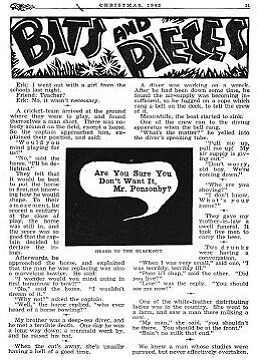 Erk:
I went out with a girl from the schools last night.
Erk:
I went out with a girl from the schools last night.
Friend: Teacher?
Erk: No, it wasn't necessary.
A cricket-team arrived at the ground where they
were to play, and found themselves a man short. There was nobody around
on the field, except a horse. So the captain approached him, explained
their position, and said : "Would you mind playing for us?’’
"No," said the horse. "I'll be delighted."
They felt that it would be best to put the horse
in first, not knowing how he would shape. To their amazement, he scored
a century; at the close of play, the horse was still in, and the score
was so good that the captain decided to declare the innings.
Afterward he approached the horse, and explained
that the man he was replacing was also a marvelous bowler. He said: "I
wonder would you mind going in first tomorrow to bowl?"
"No," said the .horse. "I wouldn't dream of it."
"Why not?" asked the captain.
"Well," the horse replied, "who ever heard of
a horse bowling?"
My brother was a deep-sea diver, and he met a terrible
death. One day he was a long way down; a mermaid went by, and he raised
his hat.
When the cat's away; she's usually having a hell of a
good time.
A diver was working on a wreck. After he had been down
some time, he found the air supply was becoming insufficient, so he tugged
on a rope which rang a bell on the deck, to tell the crew of it. Meanwhile,
the boat started to sink. One of the crew ran to the diving apparatus when
the bell rang.
"Whars the matter?" he yelled into the diver's
speaking tube.
"Pull me up, pull me up! My air supply is giving
out."
"Don't worry, old boy. We're coming down."
"Who are you shoving?"
"I don't know. What's your name?"
They gave my mother-in-law a swell funeral. It took flve
men to carry the beer.
Two drunks were having a conversation. "When I was very
small," said one, "I was terribly, terribly ill.''
"Poor O'l chap," said the other. "Did you live?"
"Live!" was the reply. "You should see me now!"
One of the white-feather distributing ladies was in the
country. She went to a farm, and saw a man there milking a cow.,.
"My man," she said, "you shouldn't be there. You should
be at the front."
“Bain't no milk that end."
In countries of the British Empire, since the 1700s
and through to World War II, men who were not enlisted in the army during
war, were considered to be cowards and were presented with a white feather
by radicals who felt this way.
We knew a man whose studies were pursued, but never effectively
overtaken.

.
068 of
150: A World War II Memory - Les Jones
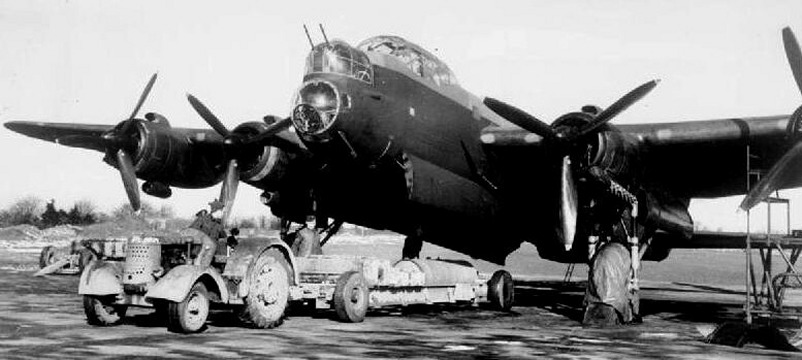
Halifax Bomber at Linton with Ground Crew
I joined up for the RCAF in October of 1941 and started on
a training course of 4 months in an old warehouse on Henry Avenue in Winnipeg.
We were taught machine shop, woodworking, fabric work, metal alloys, theory
of flight, etc. Aircrew required grade XII and I had a grade IX, so this
was why I was taking a mechanic's course.
We graduated the end of February in '42 (80 of us) and
were posted to Manning Depot at Brandon. This was the old winter fair buildings
which covered the whole block at 10th and Victoria across from the Armories.
We slept in the horse barn, on double bunks (400 rookies). We received
our needles, were taught marching and rifle drill and P.T. I had pneumonia
there (a follow up to measles in Winnipeg) so was two weeks late leaving
Manning. The hospital was the old fire hall with the big doors and plank
flooring (south-west across the street). The hockey rink had a wooden floor
installed and was used for P. T. and parades.
St Thomas, Ontario, was the next posting for further training.
The train travel was great, first class in a sleeping car, and meal tickets
for the diner. We did have leaves from St.Thomas (our first) and I was
able to visit an aunt's family at Wallaceburg and an uncle’s at Kingston.
I did not care for St Thomas and was glad to get out of there. We were
given a preference for posting in late October. I asked for #12 Brandon
and was pleased to go there.
I arrived at #12 Brandon around November 1, 1942 and was
told early the next morning we were all to be on parade. It was still summer
weather at St Thomas so my great coat had been stuffed in the bottom of
my kit bag for six months. There was no time to polish buttons, so I was
nabbed for a week's garbage run. I still remember the rats on the city
dump running all over the place. That "hill" is still there, east of First
Street by Hoffman's soccer fields.
I was introduced right away to what my duties would be
in the hangar, which was inspection of Cessna Cranes. The first week the
Sergeant asked if I would like to go for a flight, I said sure. I went
up with a student and shortly after takeoff the motor coughed and quit,
and he didn't know how to turn on the other gas tank and neither did I!
There was no snow and he picked a good firm stubble field to land, no problem.
We like to fly at every chance as it paid .75 flying time each trip.
#12 was a good station, well run, reasonably good food
and regular hours. We had a 48 every two weeks (12 days work then 2 days
off). I always went out to the farm. I had New Year's leave either '42
or '43, and happened to have my Dad's car at #12. Going home after dark,
I started down the Riverside hill too fast and gaining speed (couldn't
keep brakes on a '35 Ford). Around the bend I came across a blaze of lights,
and airmen with flashlights directing traffic around an Anson on a flatbed
coming up the hill. I went under the wing at 60 mph and flashlights diving
into he ditch. No snow that New Years.
I was on "flights" for a short while and drove the fuel
truck while there. The RCAF had introduced an upgrading course to enable
those with less than Grade XII to remuster to aircrew. I applied, was accepted
and was doing fine on the course until I had chicken pox, only two of us
on the station, but we were kept in isolation for ten days and when I came
back, my papers had been lost; so ended my aircrew aspirations.
In the spring of '44, I had 30 days leave to help with
seeding, the tractor ran from sunup to sundown. I had just returned to
#12 and was asked if I would like to go overseas, I jumped at it. Three
of us air frame were to go, stopping at Lachine, Quebec for a week, then
on to Halifax and the New Amsterdam boat. This new ship had escaped the
Germans and was used for troop transport all during the war with no escort
as she was fast and could outrun u-boats. The ship docked in the River
Clyde and we boarded a train to go to Gloucester.
Bournemouth, the usual RCAF reception depot, had been
bombed so Gloucester was being used at that time. The British jet test
station was there and we saw and heard our first jet fly over. After a
short stay, we were posted to Linton. Linton-on-Ouse was a heavy bomber
station with two squadrons, 408 and 426 flying Mark VII Halifax. Each aircraft,
on a concrete pad away out around the perimeter had its own groundcrew.
A bike was a necessity. Every day we did a thorough inspection
and repairs and with 105 foot wingspan a Halifax had a lot of area to cover!
At the same time, the engine boys would be reving up and testing the four
motors. By evening, they were ready for another sortie, each squadron sending
12 to 15 aircraft.
We had a lot of freedom at Linton, and the only parade
I was on was when the King and Queen and Princesses came to visit; and
when we buried one of our guys that drowned in the river Ouse. The river
was just back of our tin hut. Those huts were cold, and we had 3 straw
biscuits and one grey blanket for sleeping. We couldn' t eat the rolled
mutton at airmen's mess, so made up our own evening meal.
We had a 48 every two weeks, and I met my brother frequently,
in or near London Once we had a week's leave in Cornwall, where he
had been stationed. V.E. day was a great celebration. Ground crew had been
asked to sign up for the Far East war but I did not wish to. The squadron
was equipped with brand new Canadian Lancs and flew back to Dartmouth and
the Japanese war was over before they finished training in Canada.
I was posted to Themsford to install seats in Liberators
to bring back British army from the Far East. V-J day was another great
celebration, such a relief to have the war over. Shortly after I was on
my way home, leaving from Bournemouth which had been reopened. The old
ship was the Ile-de-France which creaked and groaned safely to Halifax,
and we boarded right onto the train from the dock.
Mary met the train in Winnipeg on October 25 and we were
married after I was discharged .
Les Jones passed away on January 2, 2015 in Brandon
Manitoba at the age of 95 years. After discharge from the RCAF, Leslie
and wife Mary farmed south of Brandon for 30 years and then lived in Calgary
and Brandon. His wife Mary predeceased Les after 65 years of marriage.
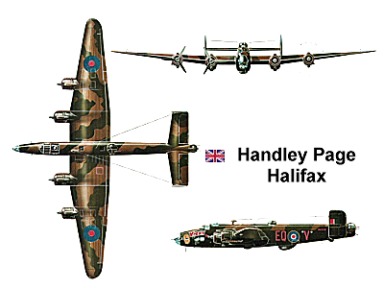
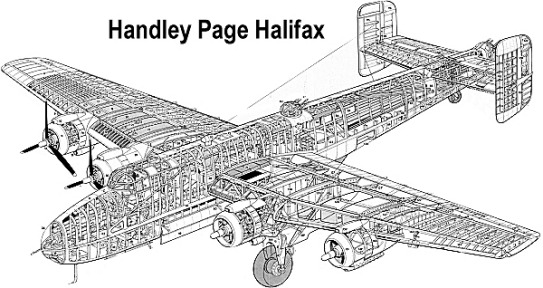

.
069 of
150: A World War II Memory - Tina Howell WD
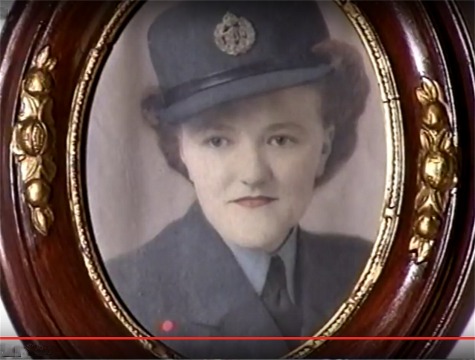
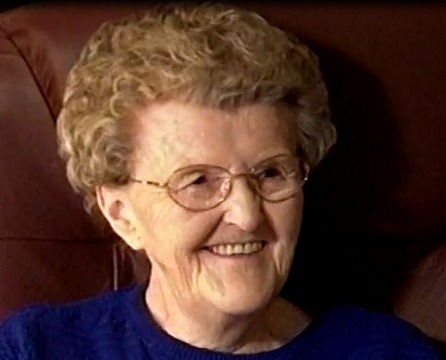 In this Oral History, Tina Howell talks about her experiences
as a young girl in England who was 15 when World War II broke out. She
and her younger brothers were sent to safety in Canada and settled in Calgary.
When she was old enough. Tina joined the Royal Canadian Air Force Women’s
Division. After training at Rockcliffe Ontario she was posted to Dafoe
Saskatchewan and Vancouver British Columbia spending two yeas in the RCAF.
At war’s end, she returned to England with her brothers.
In this Oral History, Tina Howell talks about her experiences
as a young girl in England who was 15 when World War II broke out. She
and her younger brothers were sent to safety in Canada and settled in Calgary.
When she was old enough. Tina joined the Royal Canadian Air Force Women’s
Division. After training at Rockcliffe Ontario she was posted to Dafoe
Saskatchewan and Vancouver British Columbia spending two yeas in the RCAF.
At war’s end, she returned to England with her brothers.
Tina Howell’s Oral History Video can be seen on YouTube
at:
https://youtu.be/bZmstP4pOJE
Not included in the video is Tina’s life after returning
to England. She settled back into life as before but yearned to return
to Canada which she had fallen in love with while in the RCAF. She initially
settled in Halifax Nova Scotia and Toronto Ontario. On a visit to Souris
Manitoba to see her sister Marjorie and brother-in-law Alf Howell she met
and married Albert Howell. They began life together on the farm south of
Souris where three children were born and raised.
In the late 60s, Tina and Albert moved back to Souris
as they were unable to keep up with the physical demands of farming. Tina
loved cooking and always kept a large garden. She kept busy with
sewing, knitting, crafting and painting bringing many red ribbons home
from the local fairs. She was a member of the Canadian Air Force Association,
Royal Canadian Legion, Souris Art Club and Souris Women’s Institute. Tina
passed away on December 1 2010 at the age of 86 years. She was predeceased
by her husband Albert.
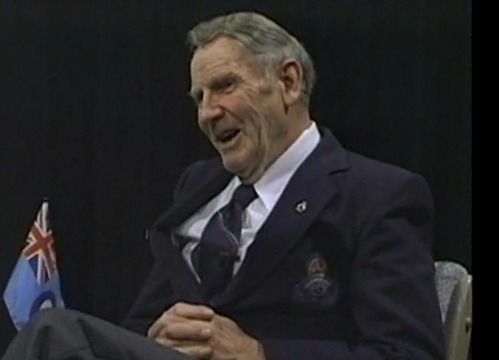 Archie
Londry grew up in the Minnedosa Manitoba area. He joined the Royal Canadian
Air Force in 1941 and took eduction updates in order to go on to training
in the British Commonwealth Air Training Plan as a air crew member. He
graduated as a Flying Instructor and returned to the No. 12 Service Flying
Training School in Brandon where he trained many pilots in advanced flying
on Cessna Crane aircraft.
Archie
Londry grew up in the Minnedosa Manitoba area. He joined the Royal Canadian
Air Force in 1941 and took eduction updates in order to go on to training
in the British Commonwealth Air Training Plan as a air crew member. He
graduated as a Flying Instructor and returned to the No. 12 Service Flying
Training School in Brandon where he trained many pilots in advanced flying
on Cessna Crane aircraft.
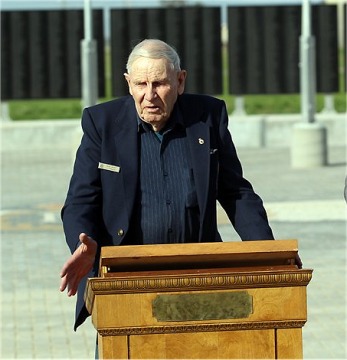
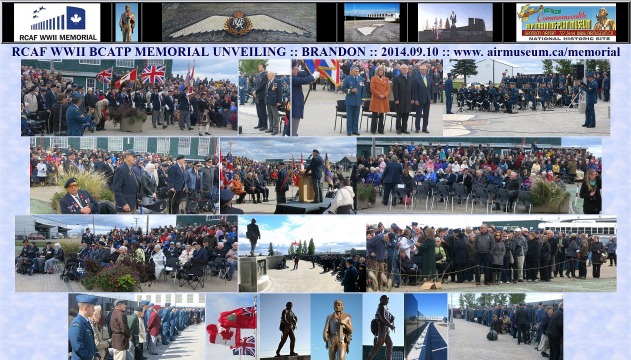
 On
learning recently that a friend of mine was about to join the Air Force,
I decided to send him (together with the usual expression of sympathy)
some general advice on conduct in the hope it might help to smooth the
rocky path ahead of him. It was the most one could in the sad circumstances.
On
learning recently that a friend of mine was about to join the Air Force,
I decided to send him (together with the usual expression of sympathy)
some general advice on conduct in the hope it might help to smooth the
rocky path ahead of him. It was the most one could in the sad circumstances.
 Erk:
I went out with a girl from the schools last night.
Erk:
I went out with a girl from the schools last night.





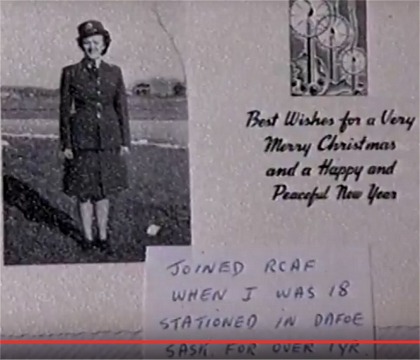
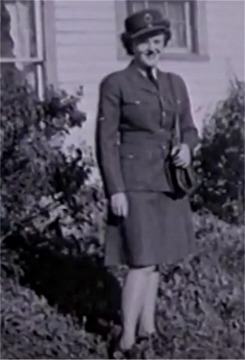
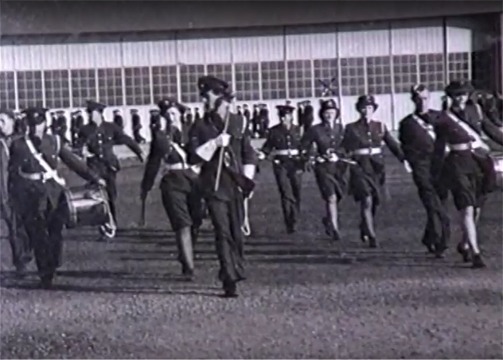
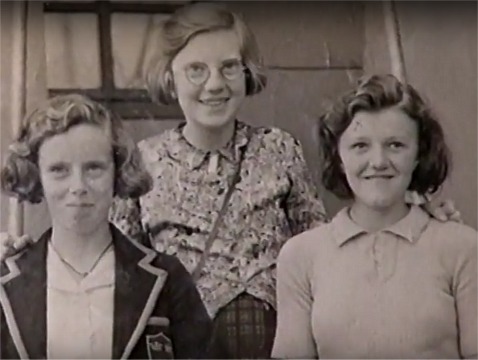
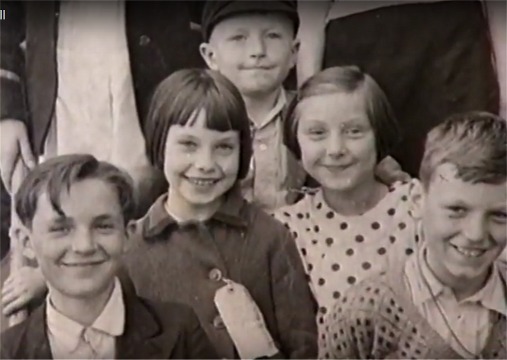
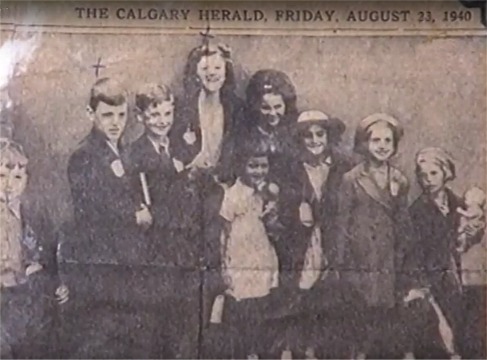
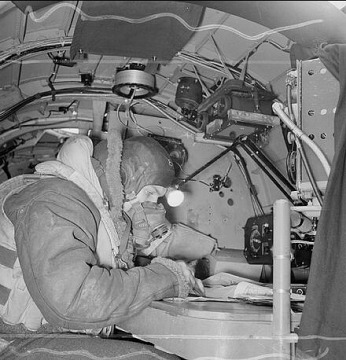 .
.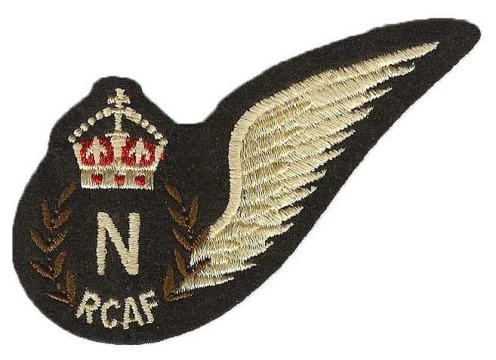
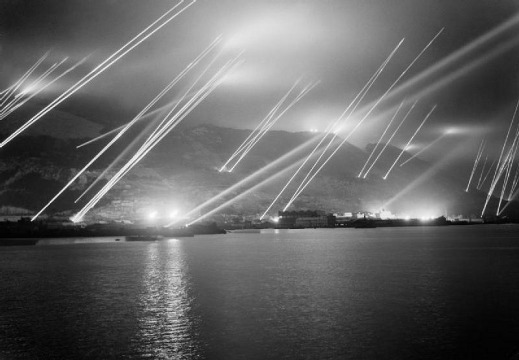 .
.